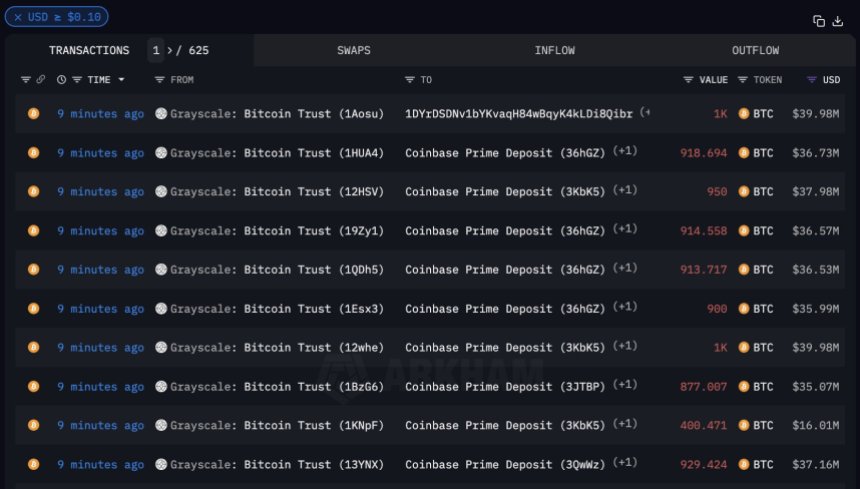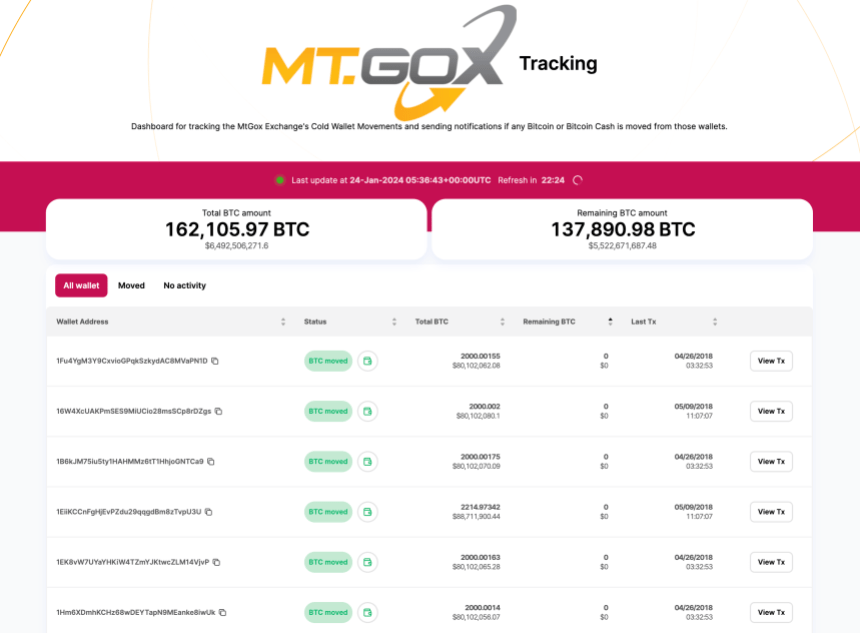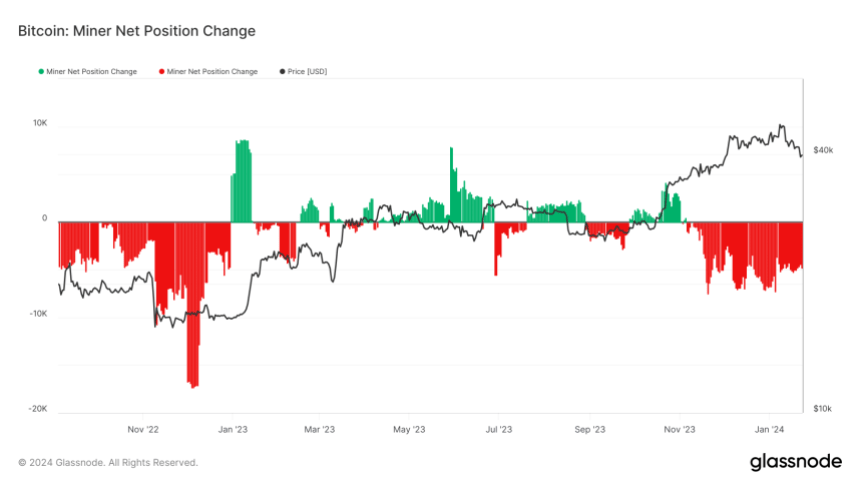The recent approval of several spot Bitcoin exchange-traded funds (ETFs) by the SEC was expected to usher in an era of mainstream adoption and sky-high prices for the flagship Cryptocurrency. Instead, Bitcoin has crashed over 20% from its 2024 high of $49,000 to just under $39,000 at the time of writing.
Where is the bottom of this crash? Is this a buy the dip opportunity? And most importantly, is this sharp correction the end of the bull market in Crypto? We explore the factors behind the selloff, and why this could ultimately lead to more bullish price action in the top Cryptocurrency by market cap.
Miners selling Bitcoin at the same time
One major factor driving the decline is miners offloading their Bitcoin onto exchanges at a pace not seen since the FTX collapse in November 2022. The amount of BTC held by miners has plunged, indicating they are selling their newly minted coins instead of the typical strategy of accumulating them as a long-term investment. This surge of sell pressure from miners has overwhelmed buying demand, even as major ETF providers snap up Bitcoin to back their newly launched funds.
Grayscale outflows adding fuel to the fire
Grayscale Bitcoin Trust has been sending billions in BTC to Coinbase. Grayscale is one of the world’s largest holders of BTC, causing the substantial outflows to have a notable impact on price action. GBTC outflows are being driven by particularly high 1.5% expense fees compared to other spot ETF alternatives in the US. The situation was made worse when FTX’s estate redeemed nearly $1 billion in GBTC. When GTBC holders cash out their shares, a corresponding BTC sale is made.

Looming Mt. Gox payouts spooking investors
Also contributing to the skittish sentiment is the long-running Mt. Gox repayment plan nearing its conclusion. The defunct exchange is preparing to distribute 137,000 BTC to holders as restitution for funds lost in its infamous 2014 hack. Many recipients are expected to cash out immediately and could flood the market with sell orders. This impending overhang has investors worrying about whether Bitcoin has enough demand to absorb the extra supply.

Ongoing macroeconomic headwinds
Bitcoin’s ties to risky asset classes mean it has suffered collateral damage from the Federal Reserve’s relentless interest rate hikes and the strong US dollar squeezing alternative assets. Until inflation shows clear signs of slowing down, investors are unlikely to find refuge…
Click Here to Read the Full Original Article at NewsBTC…
























